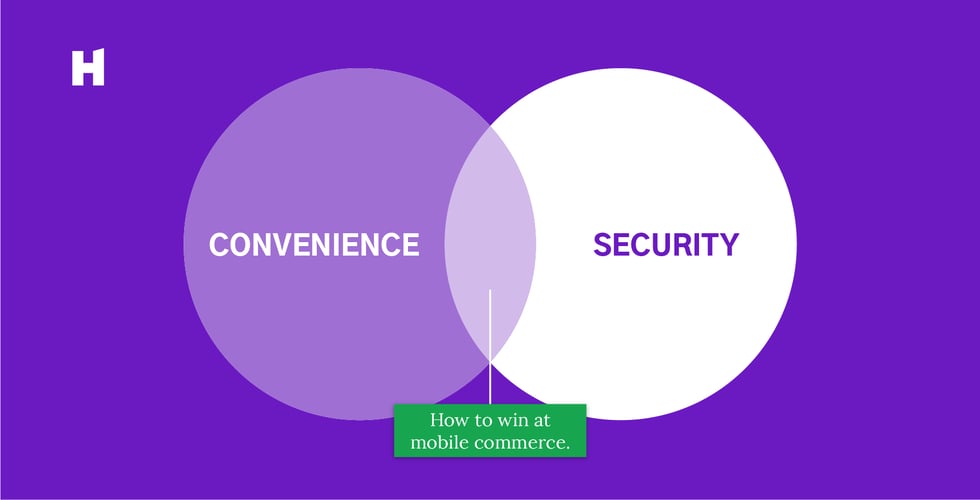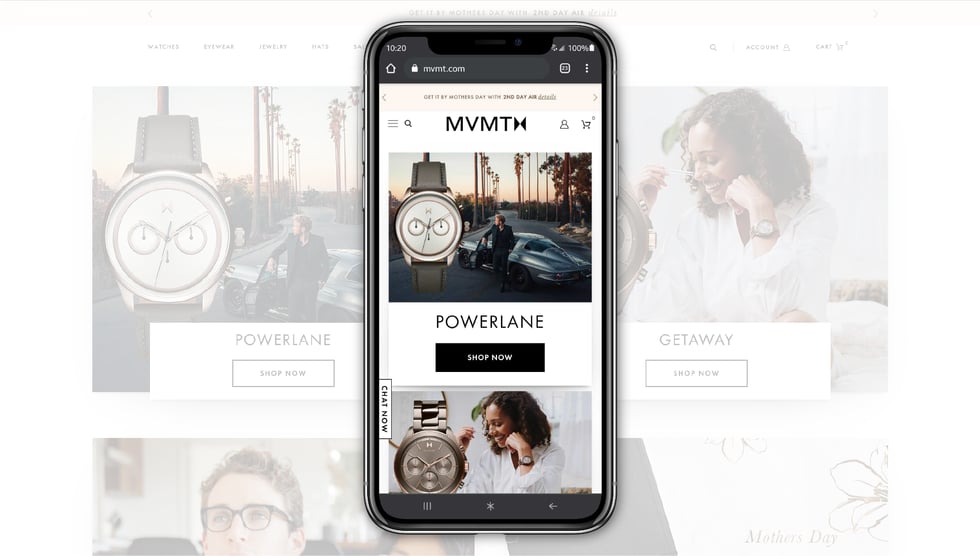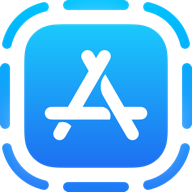NEW LAUNCH: Weill Cornell Medicine's Maya app is now available for Android!
NEW LAUNCH: Weill Cornell Medicine's Maya app is now available for Android!

As consumers, we are becoming increasingly comfortable holding lots of power in the palms of our hands. We are getting used to having the world at our fingertips. We have computers burning a hole in our pockets…
OK, enough cliches.
In this post we’re going to unpack some of our favorite mobile commerce examples. We’ll look at brands that are providing an excellent user experience, innovating in their space, or raking in lots of money.
But first—a primer on mobile commerce.
Click here to skip to the examples.
Mobile commerce, also called m-commerce, is a subset of e-commerce that represents exactly what it sounds like: E-commerce transactions conducted over mobile devices like smartphones and tablets.
Mobile commerce examples are all around us. Given that nearly half of e-commerce transactions now occur on a mobile device, you may have even seen one as recently as today. Examples include shopping, banking, food delivery/dining, and a dozen others.
It’s impossible to deny the prevalence of these transactions, but if you’re having any trouble, just think about your daily routine. In many cases, it’s simply quicker and easier to accomplish daily tasks using a smartphone—checking a bank balance while on the go, ordering a book from Amazon during a friendly conversation, etc.
Before we get into some of our favorite m-commerce examples, it’s important to understand why this shift from desktop to mobile shopping has occurred.

As we discussed at length in another blog post detailing our study of 400 consumers, convenience is the primary factor driving m-commerce. In fact, 57.5% of consumers we surveyed claimed that mobile apps are more convenient than other channels for shopping.
Mobile apps have more sophisticated ability to keep people logged in—as opposed to websites—which allows retailers to more easily store their shopping history. This, in turn, allows the user to have a more seamless experience filled with their preferences. Additionally, many apps allow users to login with their fingerprint (or even your face!) for quicker access.
As you’ll see in the examples in just a bit, mobile app developers for retail have spared no expense to make shopping convenient for their customers.
The use of digital wallets is on the rise. Digital wallets accounted for 29.8% of all e-commerce transactions in 2020 (creditcards.com). And why not? Some argue that a contactless payment made with a smartphone is actually safer than using a credit card due to card skimming.
Mobile phone companies have gone to great lengths to provide enhanced security measures for digital wallets like Apple Pay and Google Wallet, and it’s working, according to the numbers.
So when you add up greater convenience and enhanced security, it’s no surprise that m-commerce is on the rise among consumers in the United States.
But there’s plenty of benefit to retailers, too! From expanding your omnichannel presence to creating a ‘sticky’ experience where consumers are seeing your brand every day on their phone, mobile apps have huge upside for retailers.
Now let’s examine some brands that are making the most of this opportunity.
“Look at people for an example, but make sure to do things your way.”
- Queen Latifah
Look, it may be that it’s been a few years since her last hit single, but Queen Latifah was right on the money with this quote. We hope that you can look at these examples, see the good in them, and go out and make something your own.
It’s not hyperbolic to say that Domino’s has straight-up revolutionized the pizza game. Well, at least the commerce portion...They own the best online ordering experience in their niche, and it’s not particularly close.
And it’s showing up in their P&L. More than 75% of their sales come through digital channels.
Domino’s CEO Ritch Allison was recently quoted on the topic, saying:
“As we look forward, those are the kinds of movements that happened during Covid that we don’t believe are going back,” he said. “Once customers shift to digital ordering, they don’t go back to calling restaurants on the phone.”
With more than 5 million reviews on the App Store (4.8 average rating) and 1.5 million reviews on Google Play (4.7 average rating), the Domino's mobile application is the crown jewel of its digital strategy.

The app is absolutely packed full of features that users love:
And these are just some of the features of their mobile app. Say what you will about the quality of the food, but their mobile app is world-class.
It’s no surprise that beauty tutorials dominate YouTube and the online video space. After all, where are women supposed to learn make-up tips—their mothers? Not likely. Women of all ages, races, and creeds turn to the Internet to research techniques, styles, and products.
Sephora, an industry-leading chain of cosmetics stores, stepped into the virtual space in a big way with a true innovation in the space.
Sephora's mobile app features a Virtual Artist that uses facial recognition technology to allow customers to ‘try on’ its products digitally. This was piled on top of its Color IQ technology from 2012 that helps women find the perfect shades of lipstick, foundation and concealer.
To put it over the top, customers can use all of this at-home, virtual trial activity in the store by speaking with one of their Beauty Advisors. Sephora has essentially taken the high-end personal shopping experience, digitized it, and made every woman who uses their app feel like one in a million. Nicely done!

Coursera is an online learning platform that helps individuals, businesses and schools build skills in business, technology, language, science, and a lot more. They feature video courses from top institutions like Yale and even offer certificates of completion suitable for résumés and LinkedIn profiles. They have more than 77 million students worldwide learning from more than 4,600 courses.
76% of their user base is located outside the U.S., with 44% located in developing countries where the smartphone is often the only online access.
Beyond that, they have a killer app! To wit, 20% of its user base accesses its content via the mobile app.
Coursera is a great example of being able to match its robust desktop user experience to its mobile app. Additionally, it’s hard not to admire their mission to bring this type of education to users in developing countries in an affordable and efficient fashion.
When Movado (the international conglomerate with brands like Coach, HUGO BOSS, Juicy Couture, Lacoste, Tommy Hilfiger) buys your startup for over $100 million, you know you’re doing something right.
Before the blockbuster deal, however, MVMT was a startup focused on providing stylish watches that appealed to young men. As a direct-to-consumer (DTC) brand, they relied heavily on social media advertising for product discovery and sales.
And since the majority of social media users are accessing platforms like Instagram through their smartphones, having a slick mobile website was crucial to their success. And they nailed it.
The mobile site has a clean, modern, understated look that matches the tone of their products. It’s also easy to navigate and does a great job showcasing their watches and accessories in a variety of different ways—from detailed product pictures on a white, seamless background to slice-of-life photos that would fit perfectly on an Instagram influencer’s profile.

It had to be done. Yes, Starbucks was early to the mobile app game and yes, there has been quite a bit written about them already (including one of our favorite books, The Starbucks Experience by Joseph Michelli).
Still, if you’re looking for a prime example of success with m-commerce, look no further than Starbucks. In 2015, the coffee giant launched mobile payment options, which at the time accounted for 3% of sales. Fast forward to Q4 of 2016, mobile payments from its app now account for 24% of total sales.
Starbucks did a number of things well, and all at the same time.
While you may not have the benefit of serving something as ritualistic as morning coffee, brands could do well to learn from the Starbucks mobile playbook.
OK, shameless plug here—yes, this is one of the mobile apps we developed, but it’s also a great example of how mobile can help more ‘traditional’ brands attract a younger audience without alienating their current audience.
Ready to see how we helped Scott’s attract Millennials to their brand while generating over 200,000 lawn plans with their app? Head over to our case study where we break down the business behind the technology.

How we helped a 151-year-old gardening giant attract millennials.

Download our free eBook with step-by-step instructions for implementing App Clips for your brand plus real-life examples of App Clips in action.


Download our free eBook with step-by-step instructions for implementing App Clips for your brand plus real-life examples of App Clips in action.
Our emails are (almost) as cool as our digital products.
Your phone will break before our apps do.

© 2026, Heady LLC.